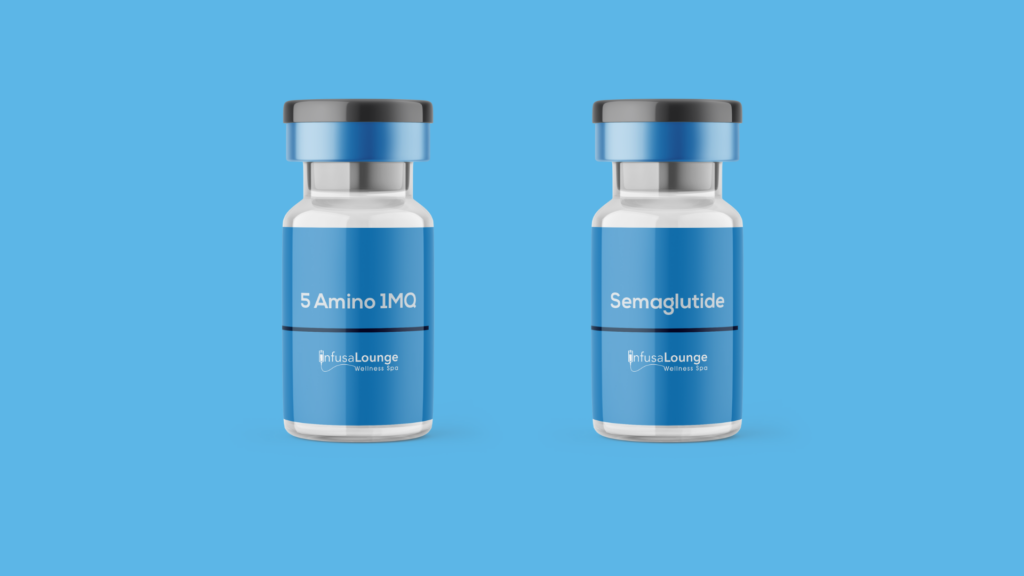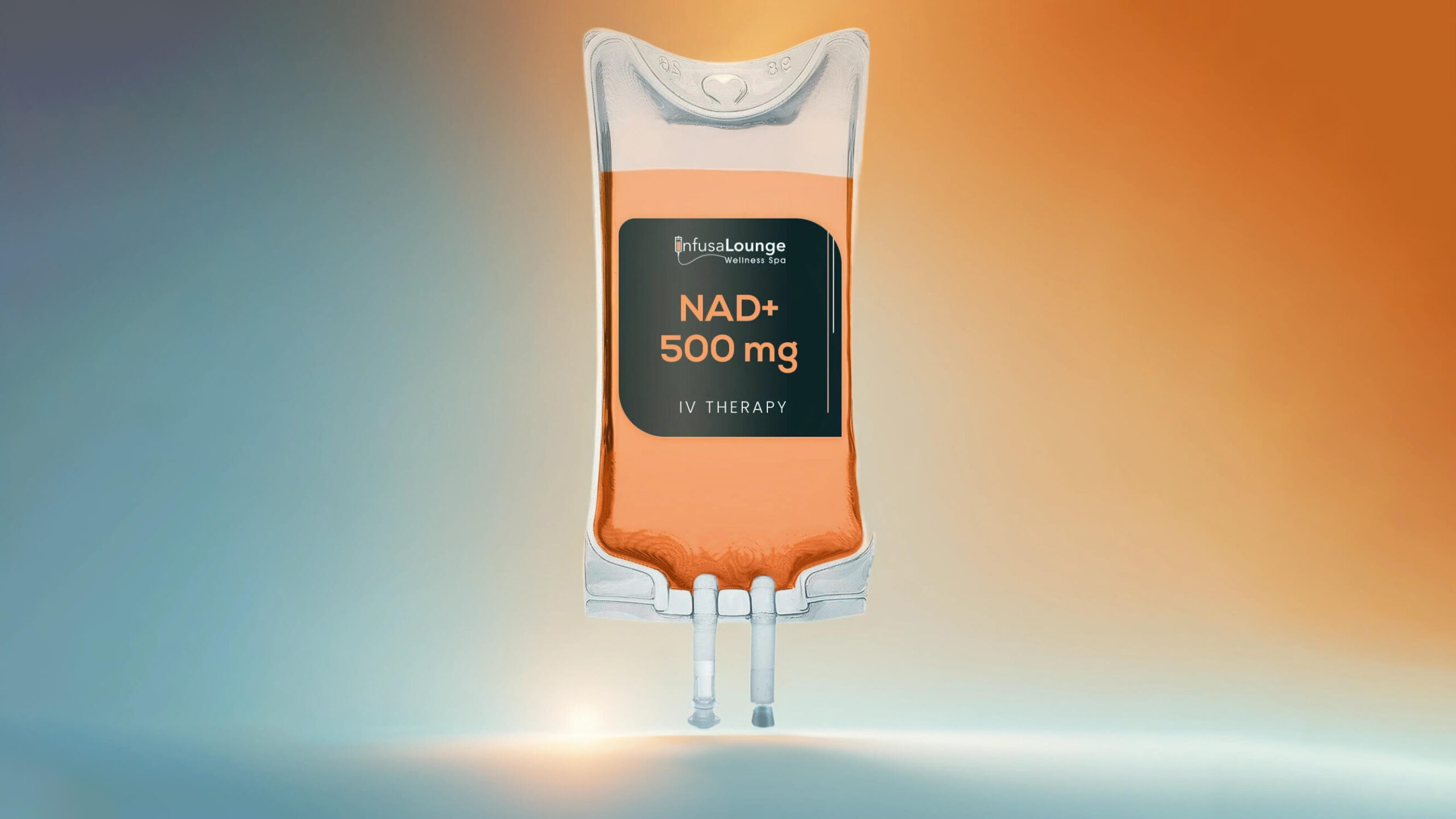Choosing between 5-Amino-1MQ and Semaglutide for weight loss can feel like navigating a maze of scientific jargon and conflicting advice. This decision is crucial because finding an effective supplement can mean the difference between achieving your health goals and facing ongoing frustration. To make this choice simpler for you, we’ve meticulously researched both options, gathering insights from clinical studies, expert viewpoints, and user testimonials.
What you might not expect is how distinct these two supplements are in their approaches to weight loss. As we explore what makes 5-Amino-1MQ and Semaglutide unique, you’ll discover which might be the better fit for your needs. Let’s start by understanding what each treatment entails.
The primary difference between 5-Amino-1MQ and Semaglutide lies in their mechanisms of action; while Semaglutide works by stimulating glucagon-like peptide-1 (GLP-1) to suppress appetite and reduce food intake, 5-Amino-1MQ blocks Nicotinamide N-methyltransferase (NNMT) to enhance fat metabolism. Both peptides aim to promote weight loss but offer distinct approaches and varying levels of research backing their efficacy.

Overview of 5-Amino-1MQ and Semaglutide
What is 5-Amino-1MQ?
5-Amino-1MQ, relatively new to the weight loss scene, offers an intriguing mechanism for fat metabolism. By inhibiting Nicotinamide N-Methyltransferase (NNMT), this peptide aids in breaking down fat cells more efficiently.
The process allows your body to utilize stored fats as energy, potentially leading to noticeable reductions in weight over time. Early studies suggest that it can play a role in this metabolic enhancement, even though it remains largely under research.
Some participants have reported improvements in their energy levels and overall physical performance, painting a hopeful picture of its efficacy.
What is Semaglutide?
Conversely, Semaglutide has made waves as a well-established option for weight management. As an FDA-approved medication, it effectively mimics the hormone glucagon-like peptide-1 (GLP-1).
By promoting satiety and stimulating insulin secretion, it helps reduce appetite significantly. Patients have found that regular use often leads to substantial weight loss; some studies even indicate reductions of around 15% or more from baseline weights.
Known by brand names like Ozempic and Wegovy, this peptide has successfully assisted not only those with obesity but also diabetic patients seeking better weight control.
With these distinct mechanisms in mind, it’s essential to explore how each treatment fits into the broader landscape of weight management therapies.
Mechanisms of Action in Weight Loss
5-Amino-1MQ operates by specifically targeting the NNMT enzyme, which plays a critical role in regulating fat metabolism in the body. When NNMT is active, it effectively acts as a barrier that inhibits the natural breakdown of fats.
In essence, think of NNMT as a traffic cop at a busy intersection — it can slow down the flow of fat metabolism, leading to inefficiencies in how your body utilizes energy. By blocking this enzyme, 5-Amino-1MQ ensures that the metabolic process can operate smoothly and effectively—like clearing away that traffic cop to allow cars to speed up without obstructions.
The analogy here is quite valuable: if you imagine fat cells as cars that need to reach their destination efficiently, then 5-Amino-1MQ removes the roadblocks that would otherwise impede their journey.
As we shift our focus to Semaglutide, it’s important to note how its action complements the effects of 5-Amino-1MQ.
Semaglutide works through an entirely different but equally impactful mechanism by mimicking the GLP-1 hormone within the intestines. When Semaglutide activates GLP-1 receptors, it initiates a series of responses that reduce appetite and slow gastric emptying. This means you feel fuller for longer periods after eating less.
Imagine having an internal support system that signals your body to stop eating when you’re genuinely satisfied. By acting on both the brain and digestive tract, Semaglutide provides not just a caloric reduction but also stabilizes blood sugar levels, which is essential for those with insulin sensitivity or diabetes.
Picture this mechanism as setting up smooth speed bumps on a highway rather than abruptly halting traffic; it transforms how food intake is managed rather than simply stopping it altogether.
Recognizing these mechanisms allows us to appreciate their broader implications on overall metabolic health.
Both peptides offer distinct pathways toward weight loss, making them valuable allies for individuals seeking significant changes in their health. While 5-Amino-1MQ enhances fat metabolism by removing inhibiting factors, Semaglutide provides an effective way to manage hunger and control calorie intake. Together, they form a comprehensive approach to combating obesity and supporting healthier metabolic functions.
This understanding paves the way for exploring further insights into how these treatments affect overall health metrics and outcomes.
Metabolic Benefits and Effects
When we examine 5-Amino-1MQ, it stands out for some distinct metabolic advantages. Users have consistently reported an increase in energy levels and endurance, making it a favorable option for those looking to combine weight loss with physical activity.
As individuals adopt a more active lifestyle, they may also find that this peptide aids in promoting muscle gain, which can be particularly appealing to those engaged in resistance training or high-intensity workouts.
Furthermore, there’s an added layer of benefit—research suggests that 5-Amino-1MQ can positively influence cardiovascular health and bolster kidney function, essentially functioning as a multi-faceted support system for the body’s performance during weight loss.
Users often note that the surge in energy lends itself to longer workout sessions and increased overall productivity throughout the day. This increase can foster a sense of accomplishment that encourages adherence to fitness routines and dietary changes, creating a positive feedback loop for weight management efforts.
On the other hand, Semaglutide offers its own set of impressive metabolic benefits worth exploring.
Semaglutide’s Metabolic Benefits
Semaglutide, renowned for its appetite-suppressing qualities, provides extensive advantages when it comes to metabolic health. One significant feature is its ability to improve glucose regulation within the body.
By enhancing insulin secretion while simultaneously reducing glucagon levels, Semaglutide aids in stabilizing blood sugar levels, which can prevent the sharp spikes and crashes that often accompany traditional diets or abrupt eating habits. This aspect is particularly beneficial for those with Type 2 diabetes and anyone looking to optimize their weight loss journey.
Moreover, beyond just helping manage diabetes, Semaglutide plays a critical role in lowering the risk of cardiovascular issues through better weight control. As patients shed pounds and regulate metabolism, there’s often a substantial improvement in markers like blood pressure and cholesterol levels.
The comprehensive nature of Semaglutide enhances overall body metabolism significantly. Many users report noticeable differences in their ability to manage cravings and stick to healthier eating patterns. Additionally, incorporating Semaglutide into their regimens often leads to long-term weight loss success because it addresses both the physical and emotional aspects of eating.
By weighing the metabolic benefits of both peptides, individuals can consider how each option aligns with their health needs and goals while looking ahead to explore research findings that could further inform their choices.
Research Insights and Evidence
Investigating the scientific foundation behind these treatments is crucial to understanding their true potential for weight loss. Ongoing studies reveal not only the effectiveness of these peptides but also how they operate within the body to aid in fat metabolism and appetite regulation.
Evidence Supporting 5-Amino-1MQ
Current research surrounding 5-Amino-1MQ, while still in its infancy, has generated quite a buzz due to its promising findings. Preliminary studies indicate that users have reported significant weight loss benefits, with some experiencing reductions closely aligned with metabolic improvements. However, these studies are just the beginning. Researchers agree that further investigation is necessary to gather robust data and truly validate these initial results.
As scientists continue to explore the intricacies of 5-Amino-1MQ, clarity around optimal dosages, long-term effects, and broader implications for different populations will emerge.
Evidence Supporting Semaglutide
On the other hand, Semaglutide comes equipped with a strong body of research backing its effectiveness. Numerous clinical trials have consistently demonstrated weight loss results averaging around a 15% reduction in body weight over extended periods. For example, participants in the STEP trials showcased impressive outcomes compared to those receiving placebos; many lost substantial amounts of weight alongside noticeable improvements in metabolic health markers.
This solid research framework supports the confidence seen among healthcare providers who recommend Semaglutide as a viable treatment for obesity management.
The evidence paints a compelling picture of both peptides, highlighting a fascinating landscape of ongoing research into how they can transform weight loss efforts. As our understanding deepens, it invites consideration of various factors such as dosage, administration routes, and safety profiles, which are critical for informed decision-making.
Dosage, Administration, and Safety
Administering 5-Amino-1MQ
The administration of 5-Amino-1MQ is straightforward; it comes in capsule form and is taken orally. This method makes it easy for many people to incorporate into their daily routine. However, it is vital to adhere strictly to the dosage guidelines provided by a healthcare professional. Taking more than the recommended amount can potentially lead to unwanted side effects.
Regular monitoring is also highly recommended during treatment. This allows patients and healthcare providers to assess how well the body responds to the medication. For instance, keeping a diary of any unusual feelings or reactions can be an effective way to communicate with your provider. It’s about finding harmony in what works best for your body.
Administering Semaglutide
On the other hand, Semaglutide requires a different approach as it is administered via subcutaneous injections. This method may seem intimidating at first glance, but many patients find that once they establish a routine, it becomes manageable. Typically, patients start with a lower dose—often around 0.25 mg per week—to help reduce the likelihood of side effects while their bodies gradually adjust. Over time, and under proper medical supervision, this dosage can be increased if necessary.
These injections are usually less frequent compared to daily oral medications. By taking a weekly shot, patients often find greater convenience, which encourages adherence to long-term treatments. Some people even prefer this method since it simplifies their everyday health management by reducing the number of daily pills they need to take.
Not only does understanding how these treatments are administered affect your choice, but evaluating safety concerns associated with each option aids in making an informed decision.
Safety Considerations
Each weight loss therapy has its own safety profile that should not be overlooked. For instance, 5-Amino-1MQ is generally well-tolerated but can have side effects—usually mild. Most commonly reported issues include gastrointestinal discomfort or slight headaches. It’s advisable to discuss any concerns regarding potential interactions with other medications before starting treatment.
In contrast, Semaglutide has a broader range of possible side effects—including nausea, vomiting, diarrhea, and in rare cases, a risk of pancreatitis. This underscores the importance of consulting with your healthcare professional about your medical history and lifestyle before initiating treatment with either drug.
Understanding the dosing schedules and methods of administration for both 5-Amino-1MQ and Semaglutide highlights not only their usability but varying degrees of comfort based on individual lifestyles. Making an informed decision hinges upon grasping these principles clearly while considering factors like personal preferences and overall health conditions as you move forward in your weight loss journey.
As we continue exploring these two options, examining their effectiveness alongside potential side effects will provide further clarity to your choices in weight loss strategies.
Effectiveness and Side Effects Comparison
When considering weight-loss treatments like 5-Amino-1MQ and Semaglutide, their effectiveness and side effects play a crucial role in decision-making. Research is evolving, but the comparisons already yield interesting insights.
Effectiveness Comparison:
| Peptide | Average Weight Loss | Duration |
|---|---|---|
| 5-Amino-1MQ | Moderate | Ongoing research |
| Semaglutide | Significant (15%+) | Up to 68 weeks |
From the data gathered, Semaglutide clearly leads in average weight loss, making it a more attractive option for individuals seeking substantial results. Reports suggest an impressive average loss of over 15%, with effective results observed over extended durations of up to 68 weeks, indicating that users may achieve sustainable progress. Meanwhile, 5-Amino-1MQ’s current effectiveness remains in the moderate range, still under investigation, presenting a level of uncertainty that potential users might want to consider.
Side Effects Comparison:
Common Side Effects of 5-Amino-1MQ:
- Limited data but potential mild allergic reactions observed.
Common Side Effects of Semaglutide:
- Nausea, vomiting, diarrhea, potential risk of pancreatitis.
Speaking of side effects, both peptides reflect different profiles. The limited data on 5-Amino-1MQ suggests that any side effects might be mild and infrequent; however, not having extensive information can leave users feeling uneasy.
On the other hand, Semaglutide has well-documented side effects that include nausea and gastrointestinal discomfort; while these may diminish over time for many users, they can initially pose challenges during treatment. Importantly, patients should be alert to more severe complications, such as the risk of pancreatitis.
Navigating through these factors will help individuals align their choices with their personal health objectives and preferences. As we transition, it’s important to consider how each treatment option fits into your overall strategy for achieving weight loss success.
Making an Informed Choice
The decision to choose between 5-Amino-1MQ and Semaglutide should not be taken lightly; it requires careful consideration of your individual health goals and unique body responses. Understanding the specific benefits of each peptide can lead to better outcomes. While Semaglutide is proven effective in appetite suppression and managing weight over the long term, 5-Amino-1MQ may appeal to those looking for a newer option that works by enhancing metabolic processes.
It’s also crucial to consider potential side effects. While both treatments have manageable side effects—such as gastrointestinal discomfort or allergic reactions—it’s advisable to assess how well you tolerate certain medications based on past experiences. This assessment can be effectively guided by a healthcare provider who understands your medical history and current health status.
“Consulting with healthcare professionals helps you make the best choices tailored specifically for you,” one client expressed about their experience at InfusaLounge. Their input emphasizes the importance of guidance when evaluating these therapies.
Connecting with specialized centers like InfusaLounge not only provides access to essential information but also aligns personalized health plans enhancing overall efficacy. At InfusaLounge, trained professionals can offer insight into which therapy may harmonize better with your lifestyle or pre-existing conditions, along with ongoing support during treatment.
Regular follow-ups are essential after initiating any treatment, as they help monitor progress and adapt plans accordingly. Remember, an open line of communication with your healthcare provider is key; share your experience and any concerns during your journey.
As you navigate this process, keep in mind that weight loss is deeply personal and multifaceted. Choose a path that feels right for you, considering your unique situation rather than just trends or popular options in the market. This thoughtful approach can lead to both improved results and a more satisfying experience overall.







